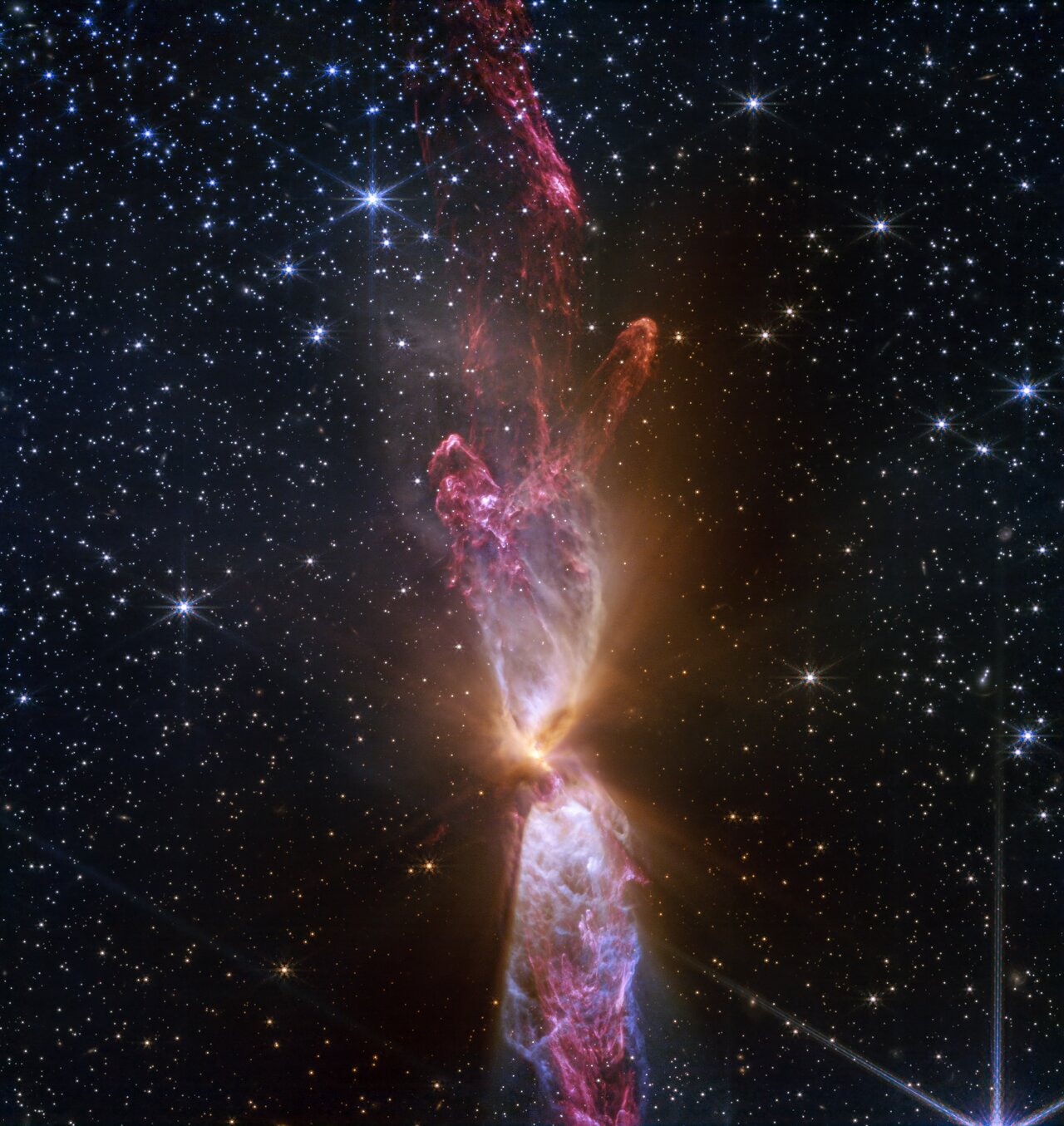Astronomers working with the James Webb Telescope (JWST) have published another amazing image. It demonstrates an “hourglass” with two stars being born in the center.

The system photographed by JWST is known as L483. It consists of two protostars located 650 light-years away from Earth. The protostars are located in the center of an hourglass-like figure — in an opaque horizontal disk composed of cold gas and dust.
Above and below the protostars are cone-shaped gas and dust structures. They were formed by the release of matter that occurred over tens of thousands of years. When more recent emissions collide with older ones, the material can crumple and twist depending on the density of the substance. Over time, chemical reactions in these emissions and the surrounding cloud produced a range of molecules such as carbon monoxide, methanol, and several other organic compounds.
The “hourglass” forming cones are composed of thinner dust layers and therefore more distant background stars shine through them. You can also notice dark V-shapes at right angles to them. These are regions where cosmic dust is so dense that it almost completely blocks out starlight.
Thanks to the sensitivity of its instruments, JWST was able to identify a number of previously unknown features of the hourglass structure. For example, you can see the distinctive orange arc in the upper right side. This is a shock front where starbursts have been slowed by existing, denser material.
At the bottom of the “hourglass” you can see tiny light purple pillars. They indicate the non-stop winds of the central stars and formed because the material inside them is dense enough that it hasn’t been blown away yet.
According to astronomers’ calculations, when star formation is completed in a million years, their mass will be approximately equal to the mass of our Sun. By this point, the streams of matter they emit will have completely cleared the area, sweeping away the old translucent emissions. Only a tiny disk of gas and dust will remain, in which planets may eventually form.
Earlier we reported on how James Webb studied the atmosphere of a rogue planet.
According to Esawebb


